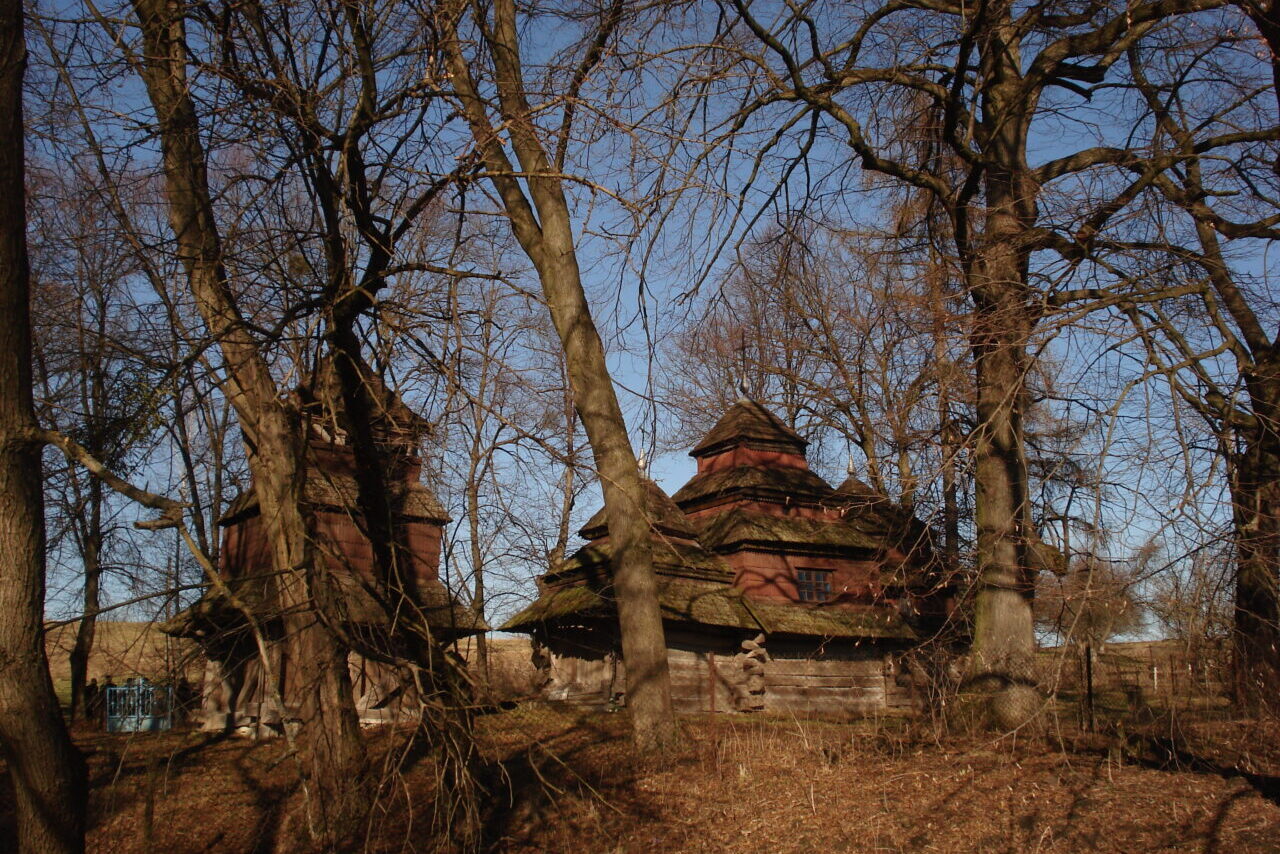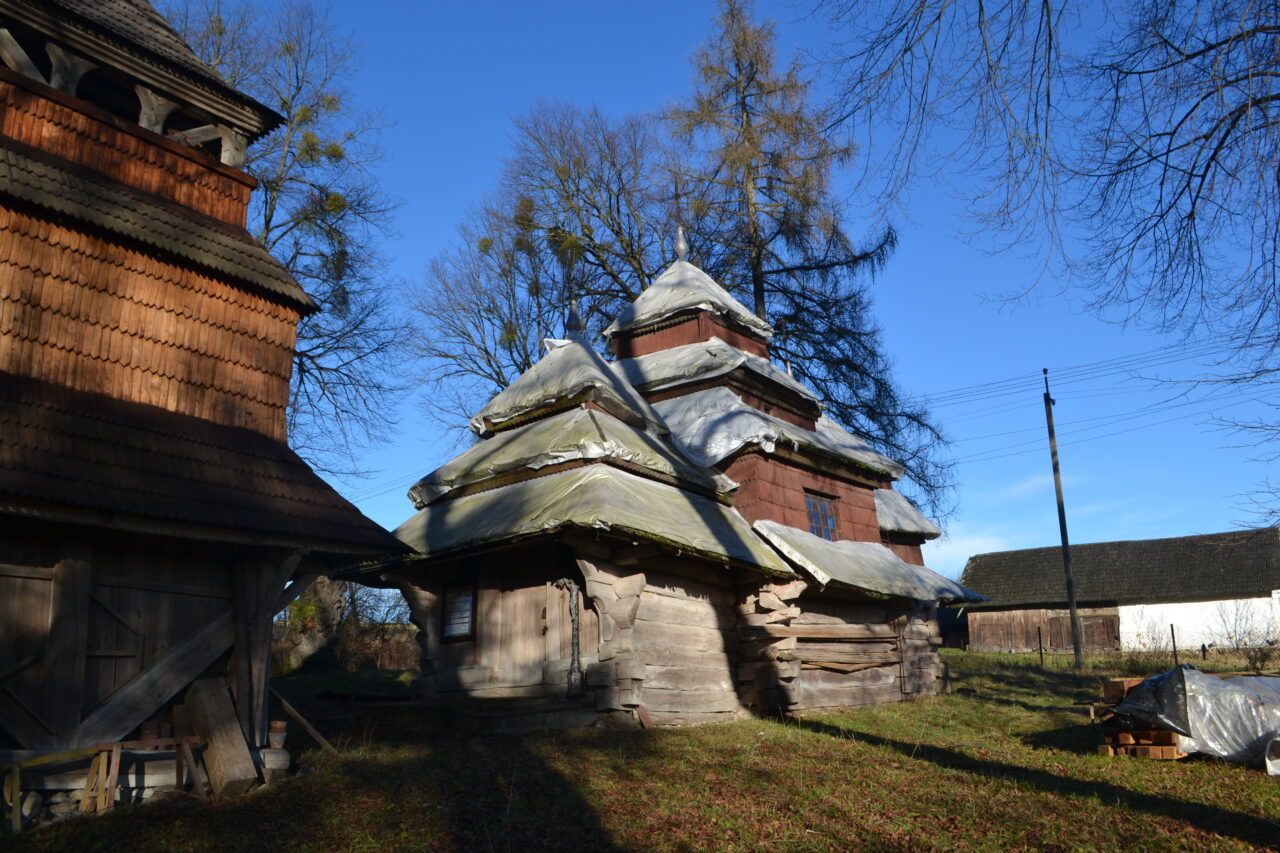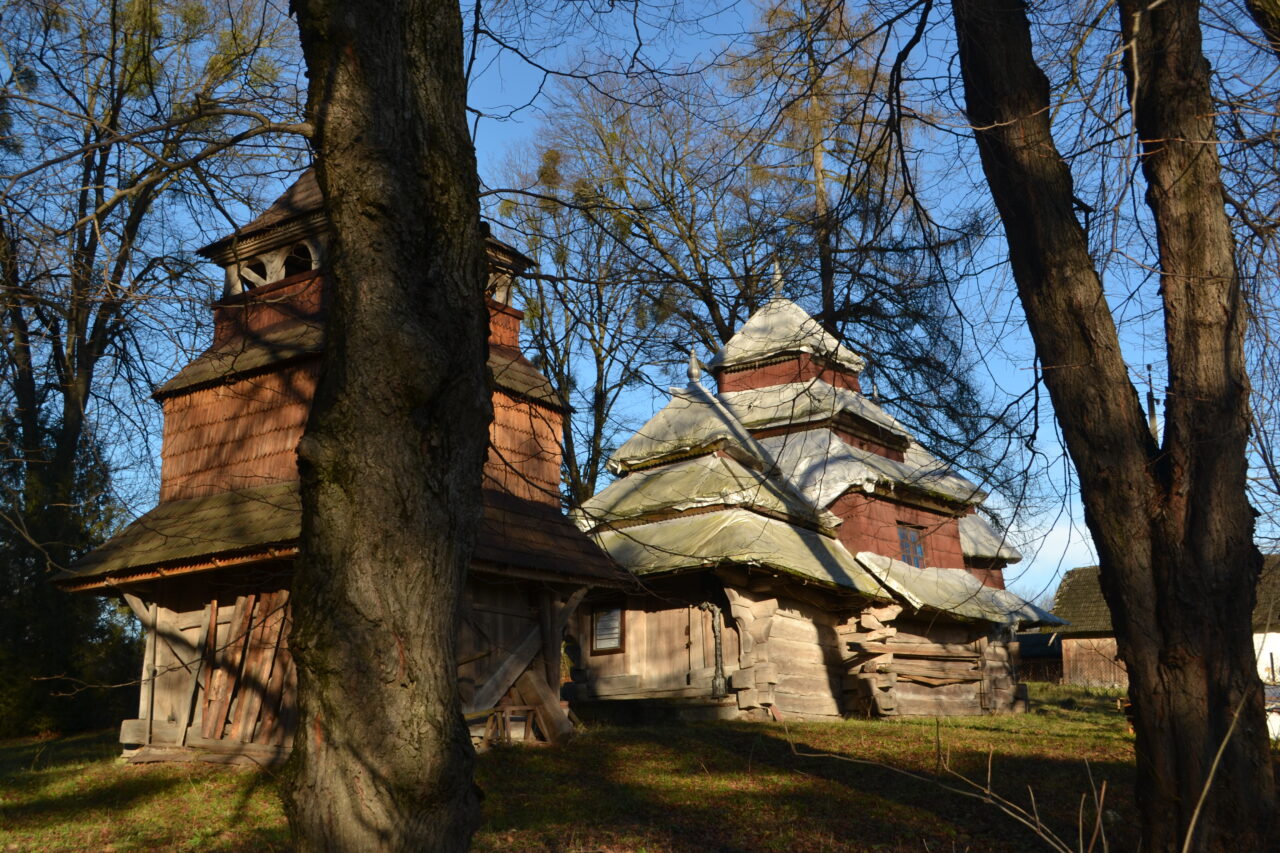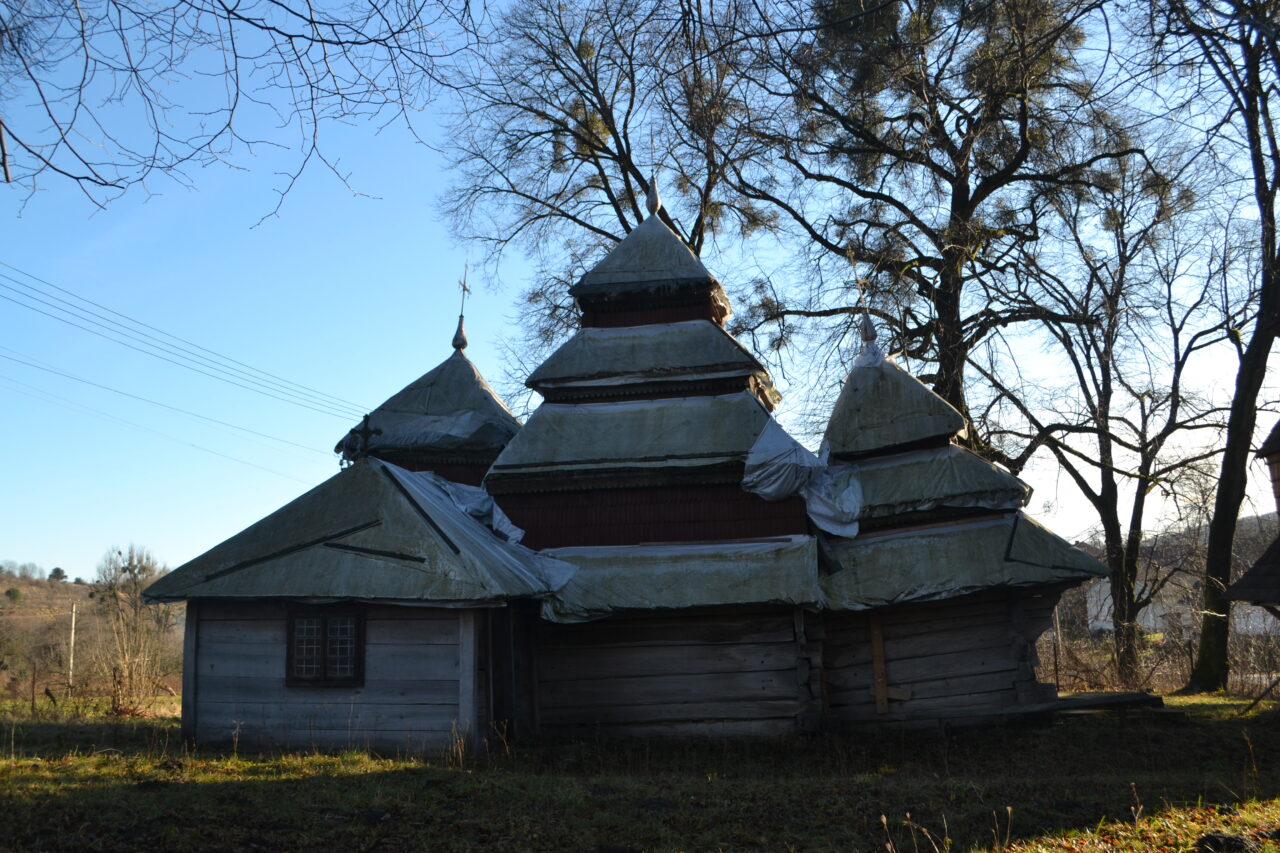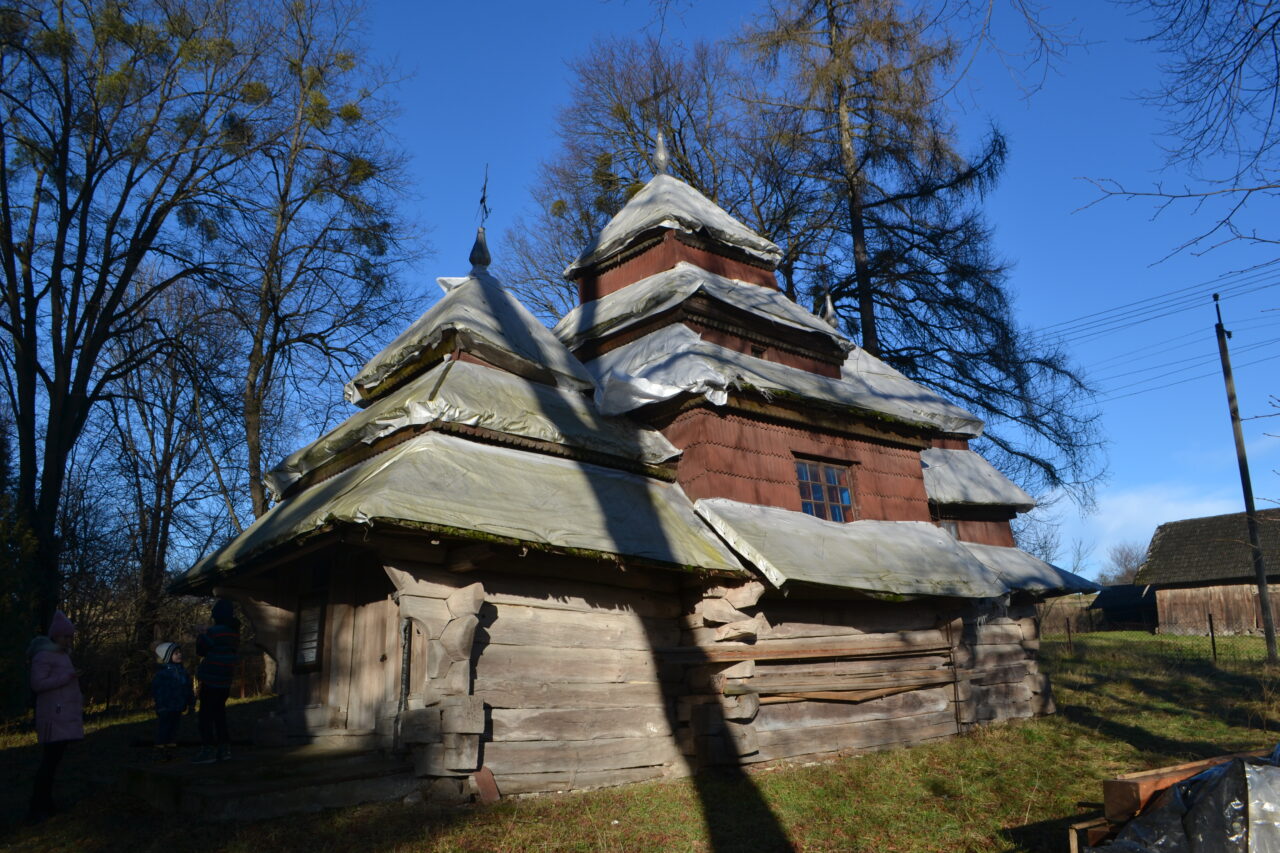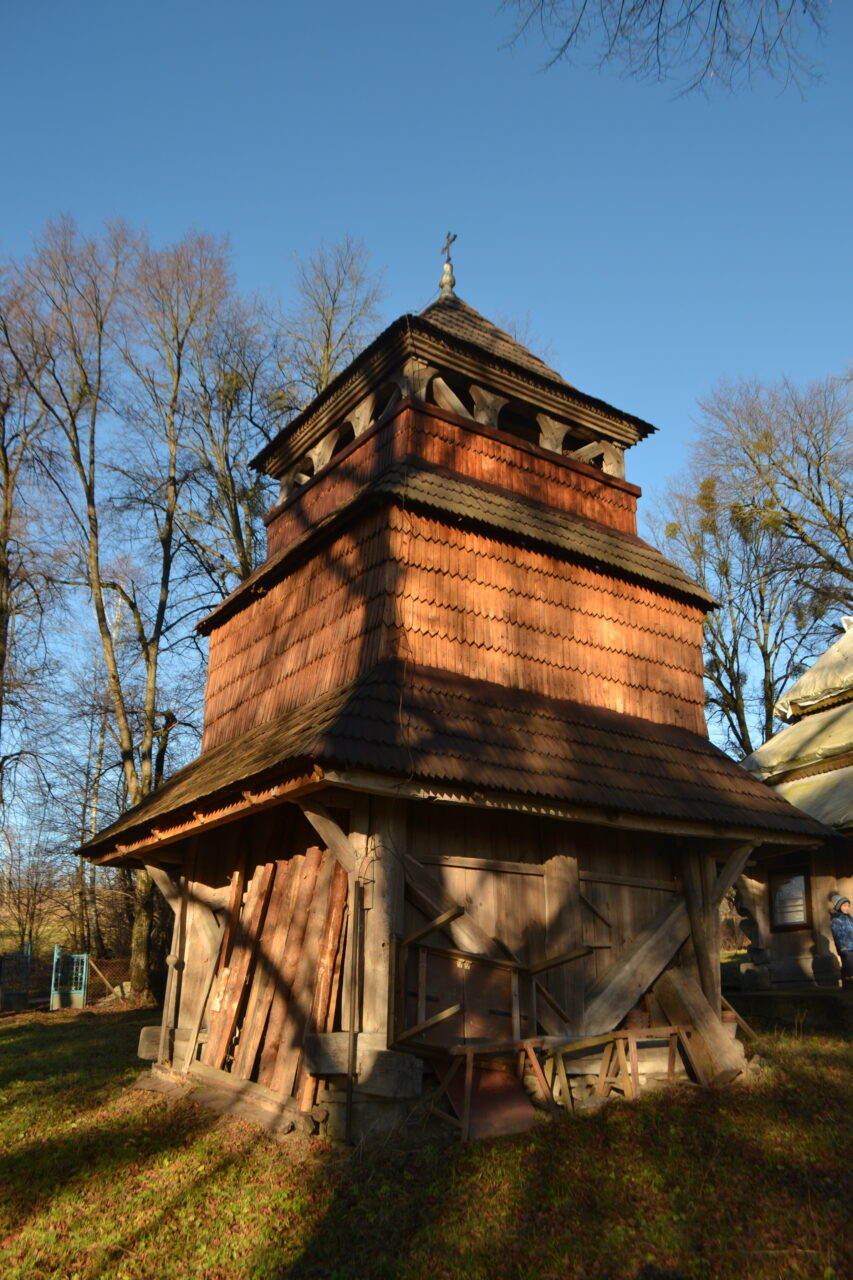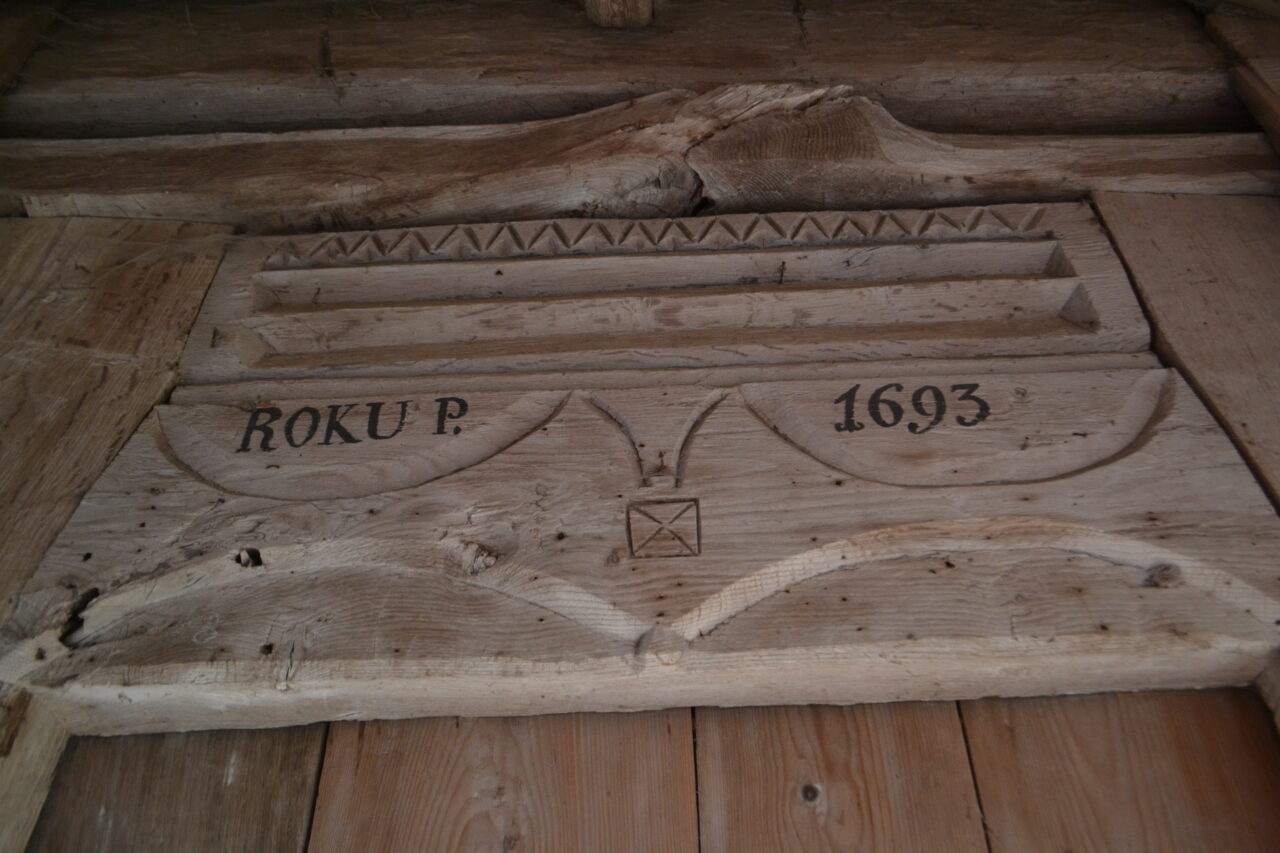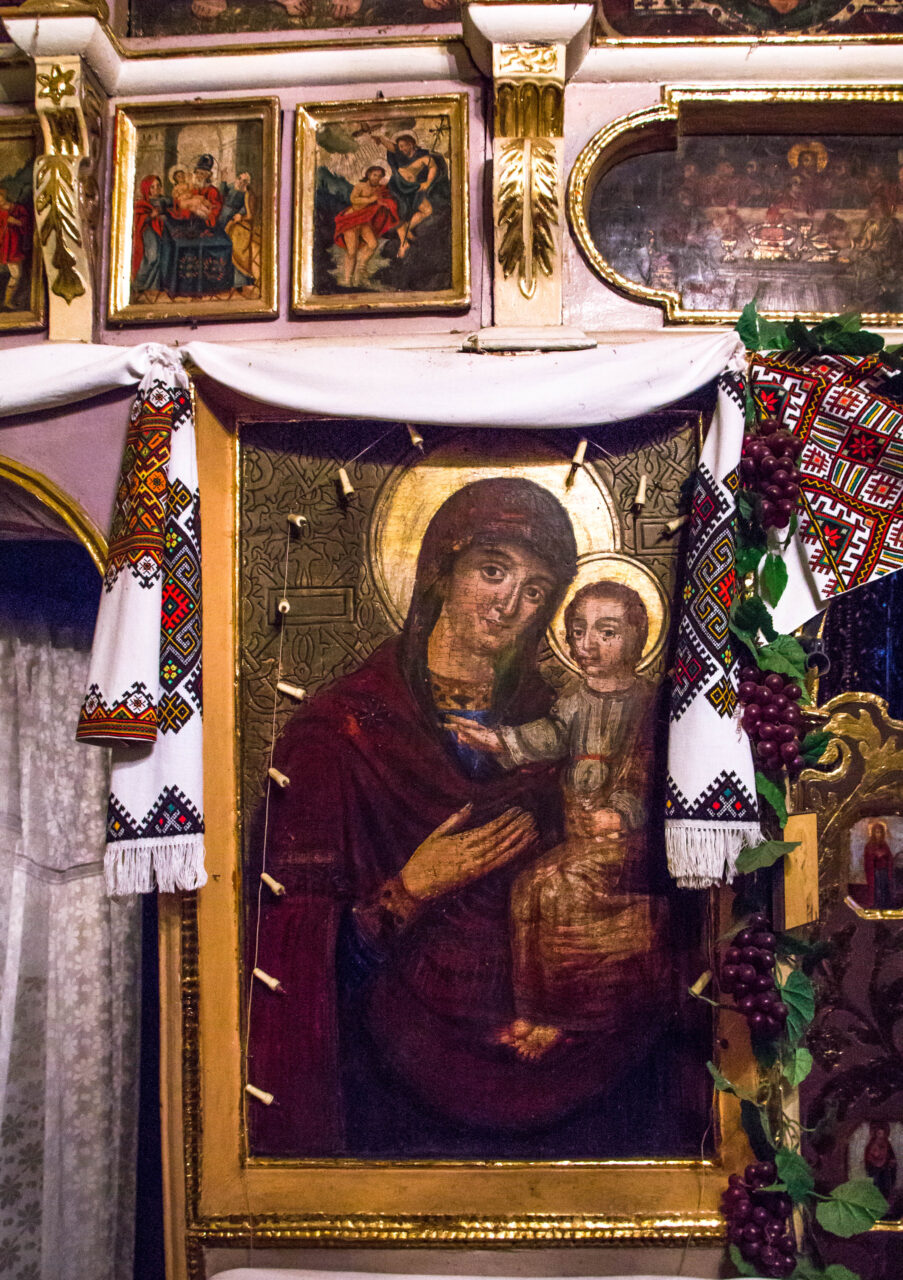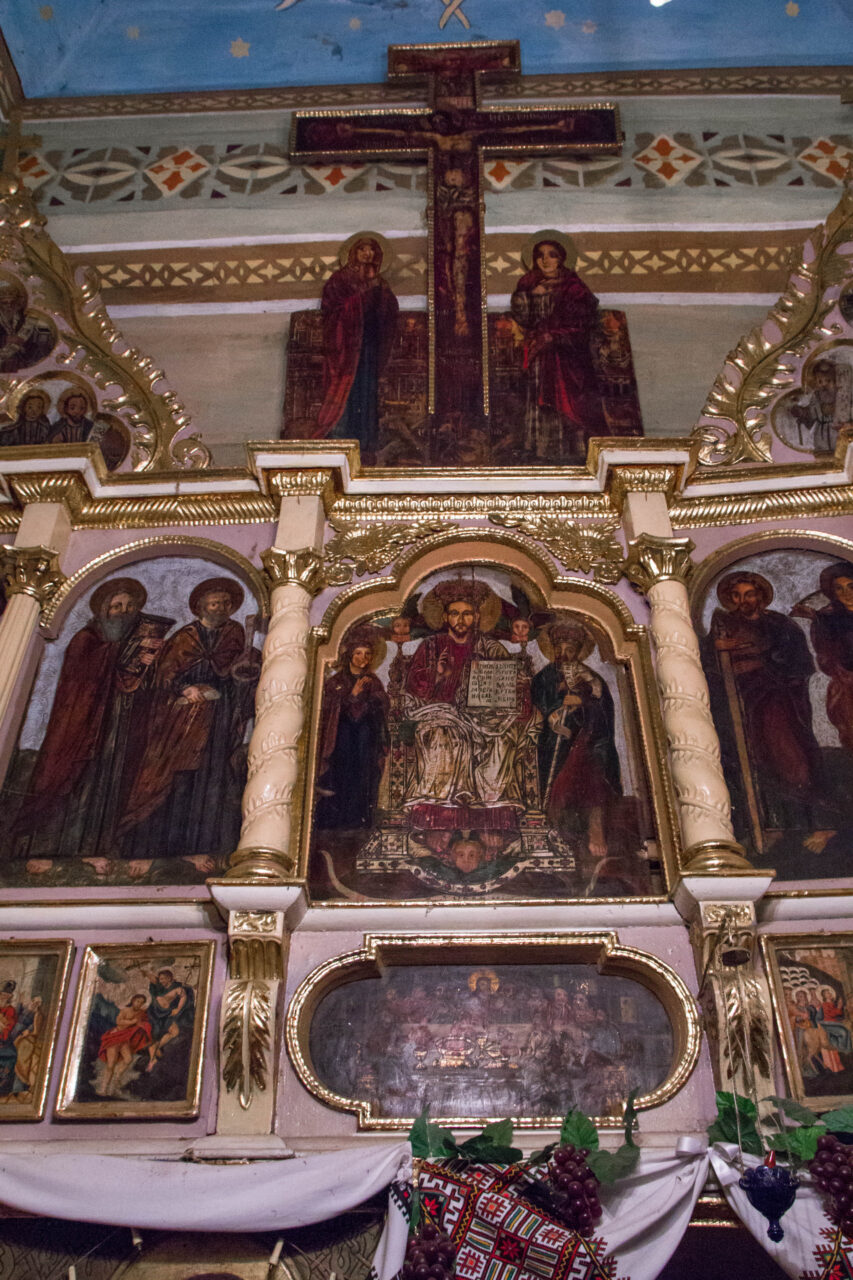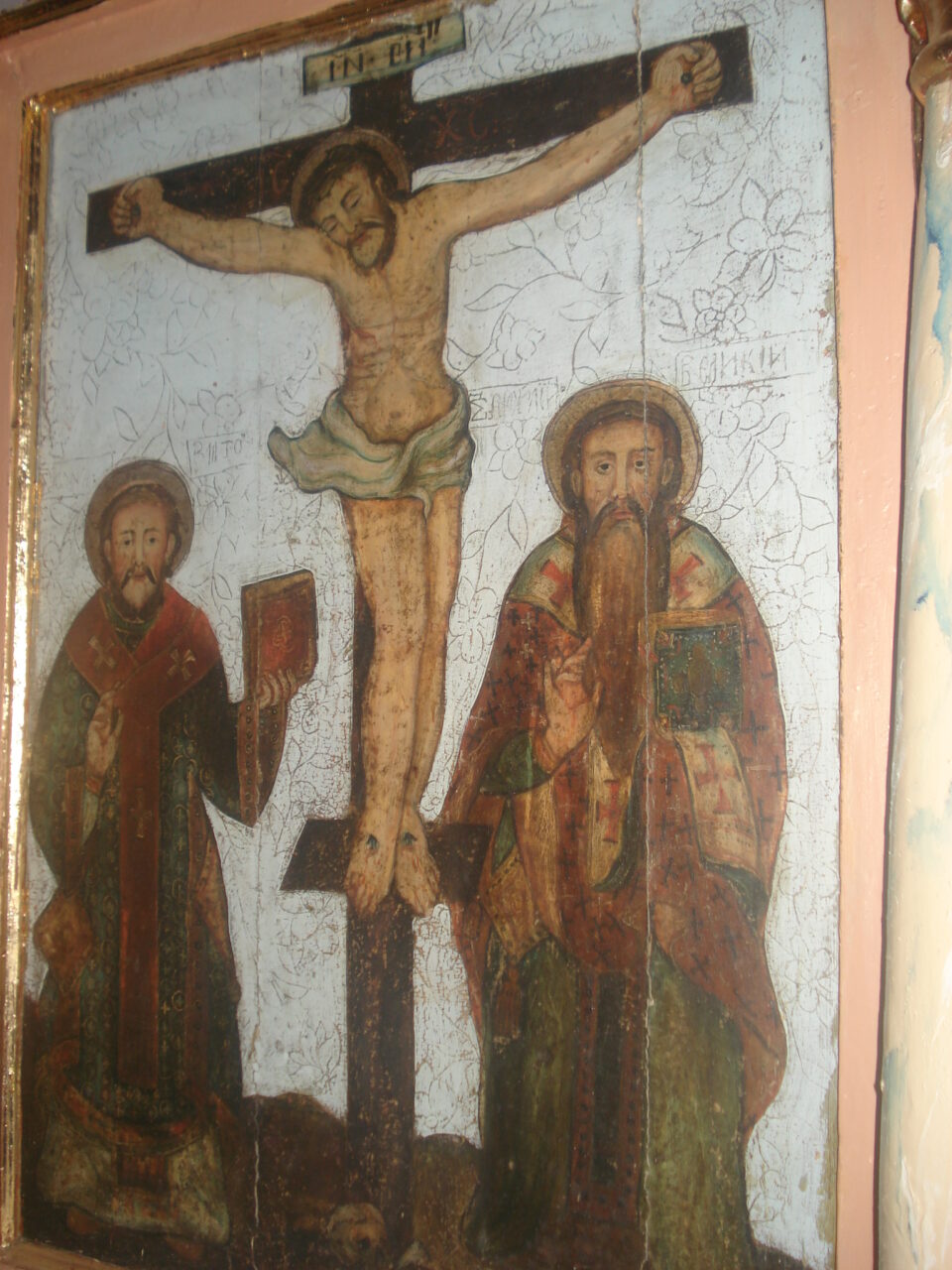Kuhaiiv hides itself from the lively Stryi motorway among the green hills, like a mushroom in the woods. And the three-log church of Epiphany in this small (once more than half a thousand, now 171 inhabitants according to the latest census) village in Pustomyty region is just as fabulous. Among the age-old lindens on the green meadow there is authenticity among authenticity (where was UNESCO looking?). Tiny as a toy – and it’s hard to believe that this is a real serious temple. How many believers can find room in this miniature narthex, will there be a place for the priest to move, and if there is a choir… a lot of other similar questions come up to mind at the very first glance at this Thumbelina among wooden churches in Lviv region. Some of them can be answered with matter-of-fact numbers: for example, the area of the temple is only 75 square meters (which nowadays is too little not only for a religious building, but also for an average private house), 10 meters in length, and 7.5 meters in width. For the Opolany peasants, who constructed the building in the last years of the 17th century it was definitely enough. It is completed with three spiky tent tops in Boiko style, but the logs are not fir, they are oak, and of miniature size, like Opillia one.
The date is indicated on the doorpost, 1693. Miniature windows exclusively on the southern façade hint at an older construction time or at too strong traditions: it was long before the late 17th century that people stopped construction in this way.
Until the 21st century the temple stayed almost unchanged. Only during one of the renovations over these 300 years, a sacristy was added to the altar north wall of this tiny shrine. It came out bigger than the altar part, as it is so small, that building a smaller sacristy would be a real challenge. In Soviet times, the church was closed, the same as in neighboring villages. During the maneuvers, the collective farm head decided to knock down the church with heavy military equipment. It was already wrapped with ropes and everyone was waiting for the order. Then the commander came, walked around and said: ‘I haven’t built this, and I’m not going to destroy this. Unhook it!’. But the condition of the pearl church was extremely catastrophic, the roof shingles required replacement. Although the latest of the reparations was not in the days of yore, as the peasants repaired their closed church twice – in 1960s and 1985. They secretly nailed the new shingles at night, as they were afraid of problems with the party apparatus. Unfortunately no one then prompted than shingles should not be sawn, but chipped.
In 1989 the church was painted brown outside and inside the walls were covered with a simple painting. In a short time the church was triumphantly revived on the rise wave the peasants built a large brick church in Kuhaiiv, on which all the resources and efforts were concentrated. And then there was the crisis of lack of money and poverty… The old temple was abandoned, as if waiting for the inevitable end. But the carrying Kuhaiiv dwellers didn’t let the ancient architectural pearl disappear. They were Andrii Saliuk, the head of UTOPIK Lviv regional organization and ‘Save Kuhaiiv’ public initiative (acting since 2012).
It is being saved step by step: first the alarm system was set, later (in 2017) the pyramidal roofs were covered with vapor-permeable film, which allows the wood to breathe, and doesn’t let in destructive for the iconostasis rain and snow. Then, in 2018 it was possible to cover the three-tiered frame bell tower (the end of the 17th century) with new shingles.
Why did they start to restore the bell tower and not the church, why such a strange procedure? In fact it was logical: bad weather conditions and moisture did their dirty work. The status of an architectural monument of national importance does not guarantee the village churches at least some financial support or professional restoration. The church of Epiphany had long been a helpless ruin. The temple roof and partially the walls were completely rotten. The roof shingles crumble with a little touch, as they have rotted and decayed. The logs are eaten by bark beetles. Due to frequent flooding, the temple creviced seriously. The building oak foundations require immediate replacement. One wrong move, and there is a risk of losing the monument. That’s why the professional restorers work carefully, filigree, so as not to damage the church in Kuhaiiv.
In 2012, according to the project documentation, 3.3 million hryvnias were needed to save the church; in 2017 experts already mentioned the amount of 5.5 million hryvnias.
Inside the church was also amazing, everything was so old-fashioned, orthodox, as there still were seven years until the Lviv diocese adopted the Union. The magnificent baroque four-tiered iconostasis was remodeled several times. Some its parts date back to 1702, others appeared a century later, in 1806. The artists’ names are unknown, they all were folk masters. From bottom to top: Sovereign, the Feasts tier, the Twelve Apostles and the Prophets. Some of the icons have the remnants of gilding, on others you can barely tell who is depicted, the moisture has harmed them. And all this among the carved acanthus leaves, sunflowers, vines and decorative ornaments. There is a very interesting Sovereign, as there is only one deacon’s door, due to the lack of space for the second one. And this deacon’s door was stolen in 2011. Also there is an interesting icon of the Mother of God Hodegetria in the typical for 16th-18th century Galicia style. It is partially silver-plated with saffron varnish. Due to this the icon seems to be gilded. In the summer of 2020, it was decided to transfer the iconostasis to the workshop for restoration. It will be returned to its Penates to already renovated, restored church. We believe that this will be the case.

